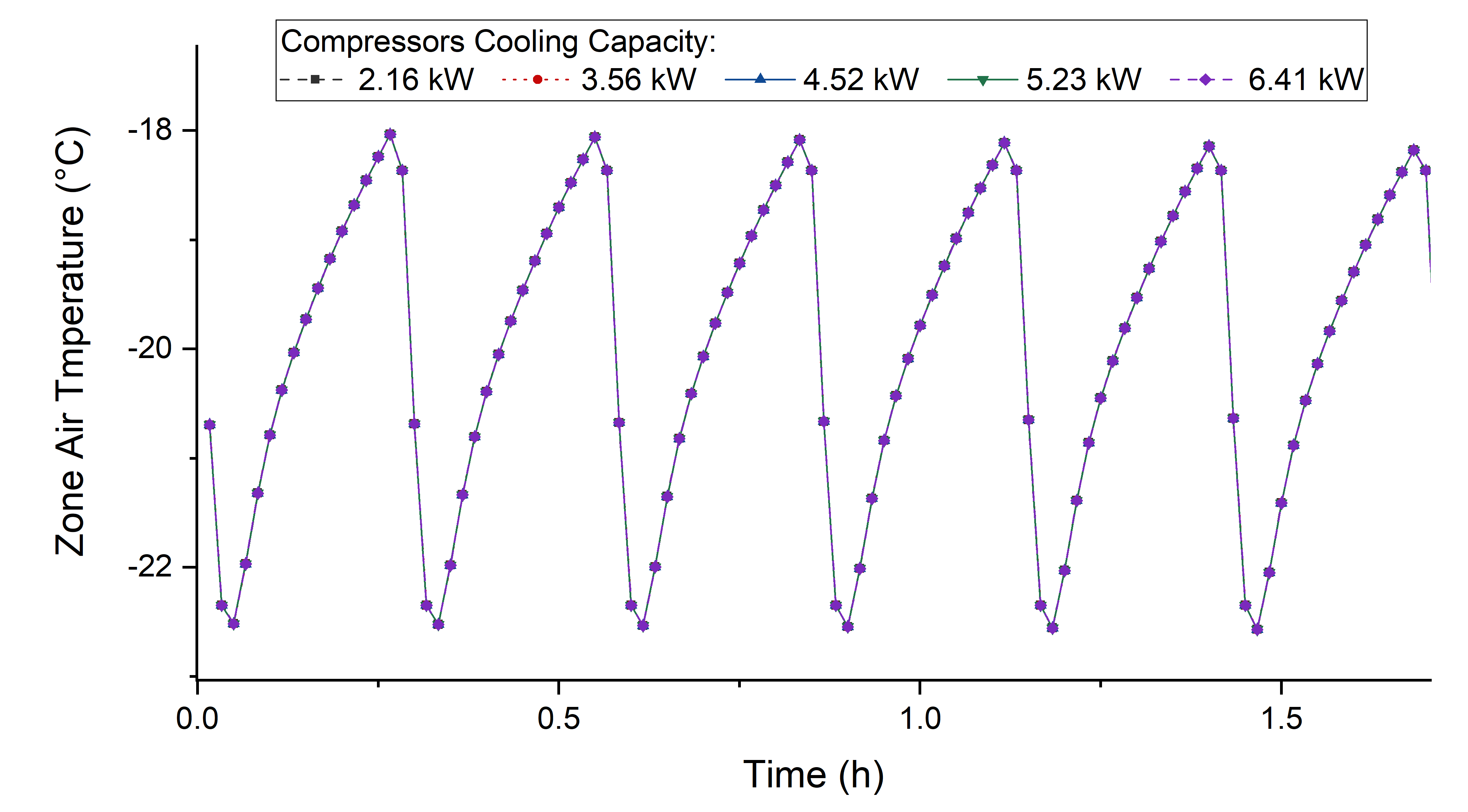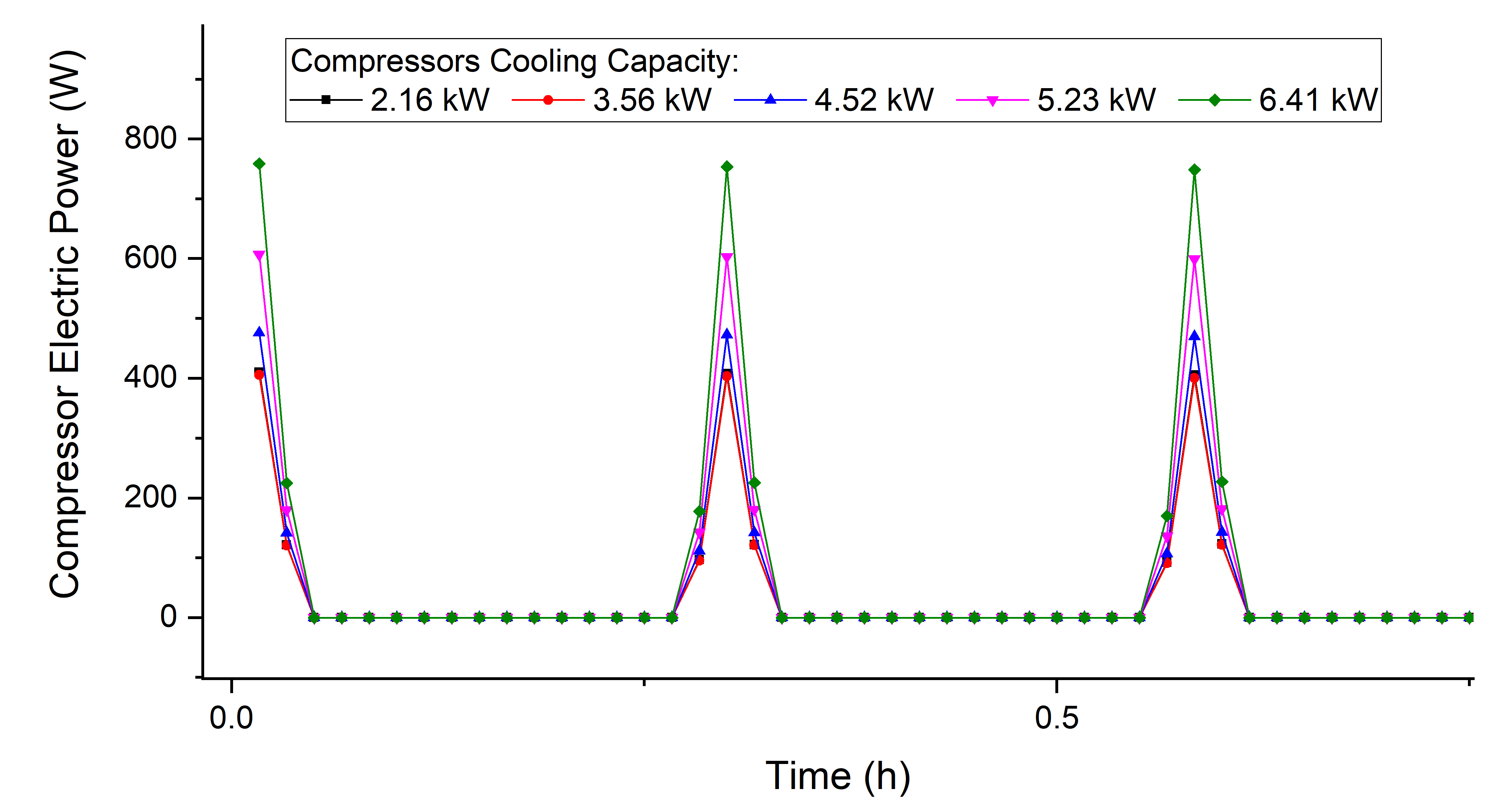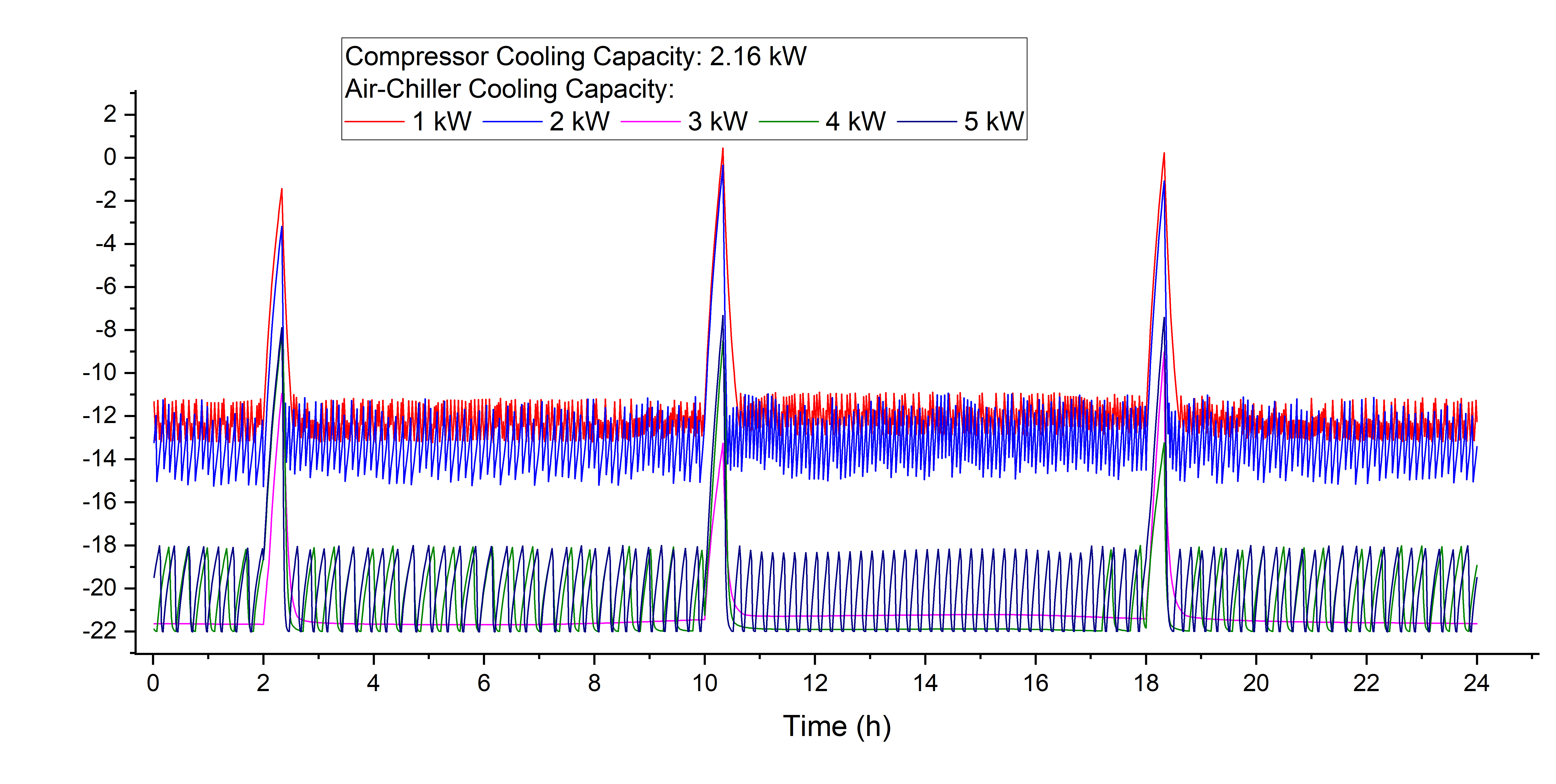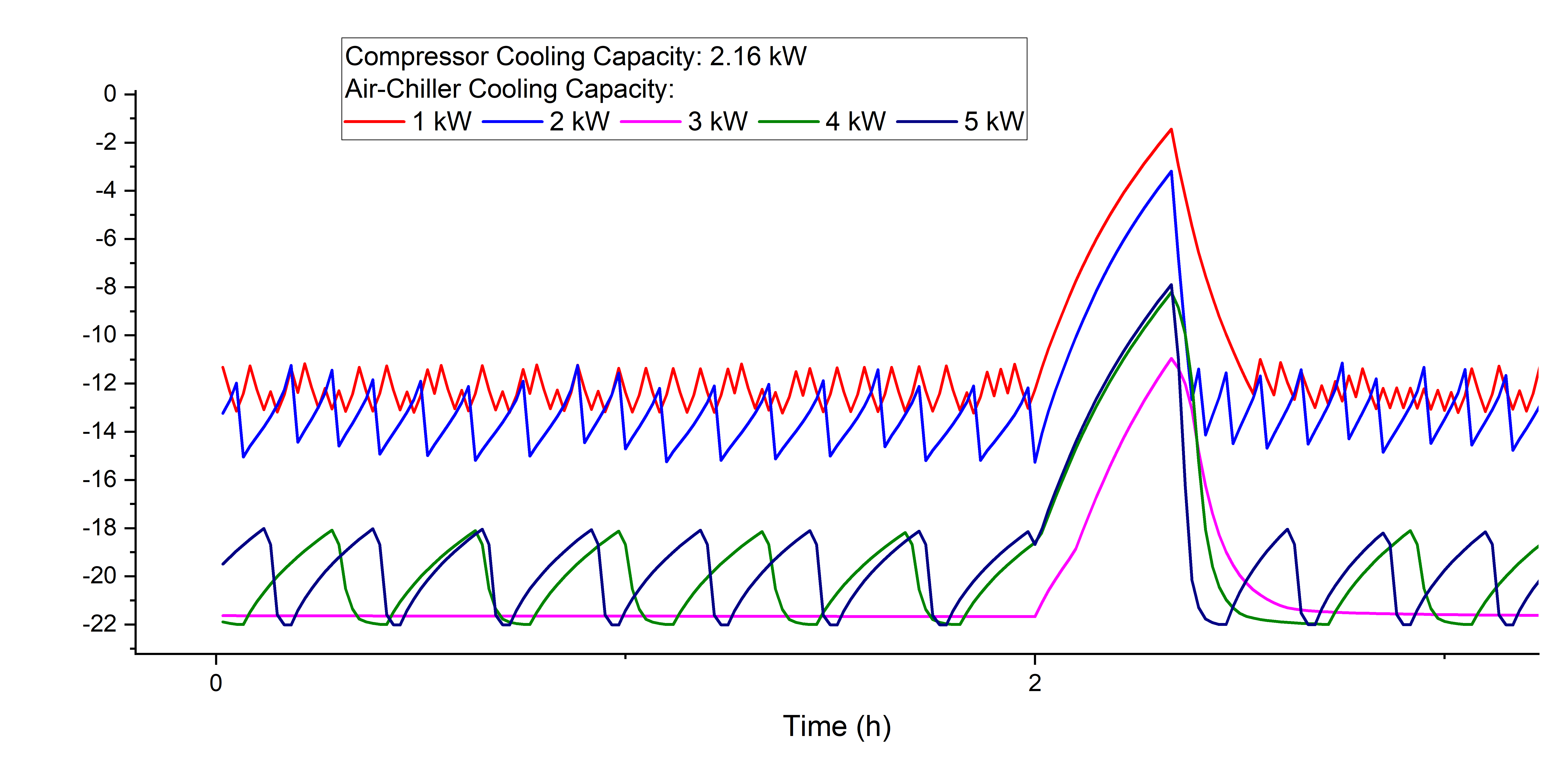Hello community!
I am currently working on modeling a cold room storage, specifically a walk-in freezer, using EnergyPlus (E+).
Figure 1 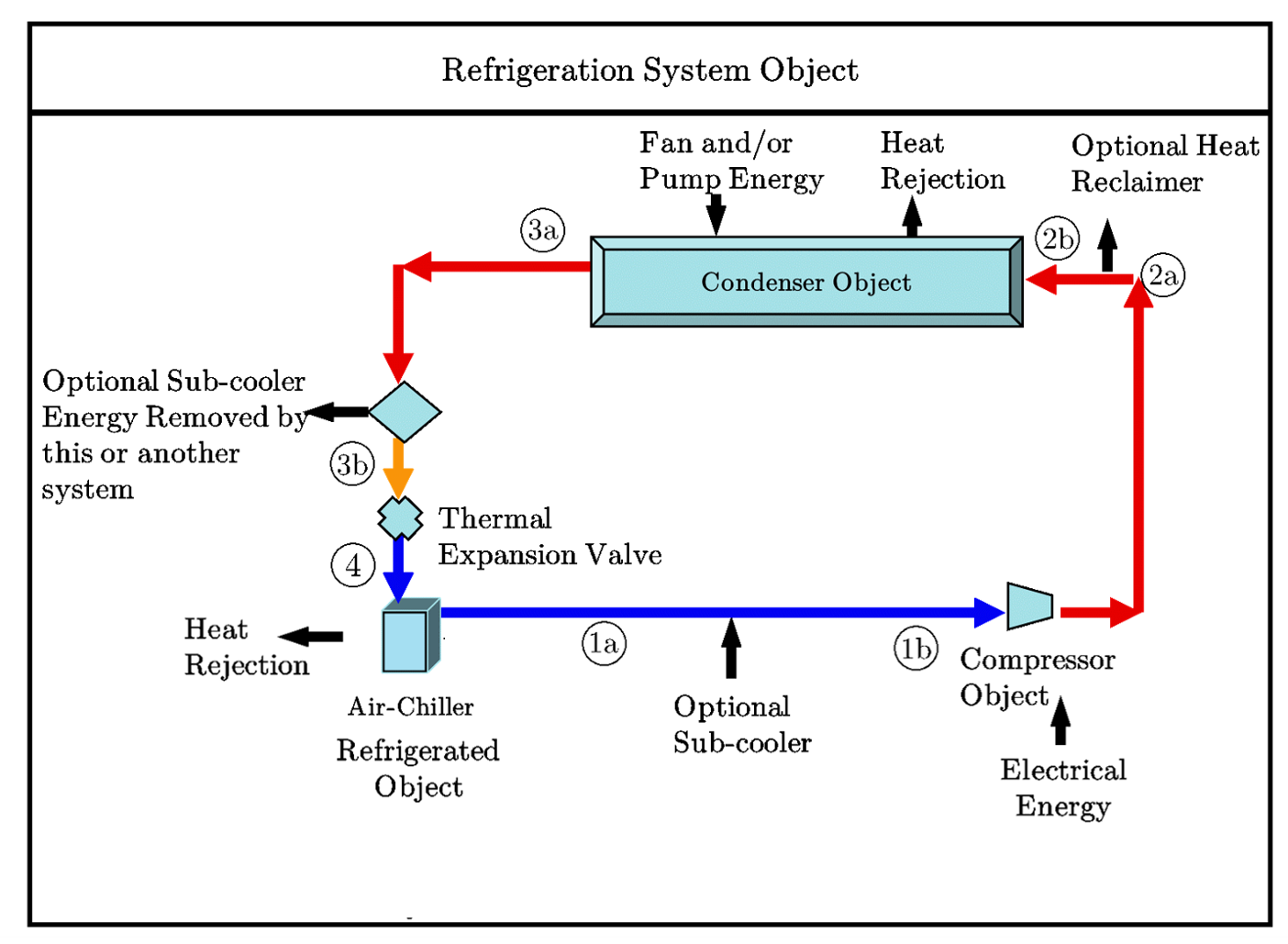
To achieve this, I have employed the Air-Chillr object (ArCh), which possesses a cooling capacity of 5.98 kW, as depicted in Figure 2.
Figure 2 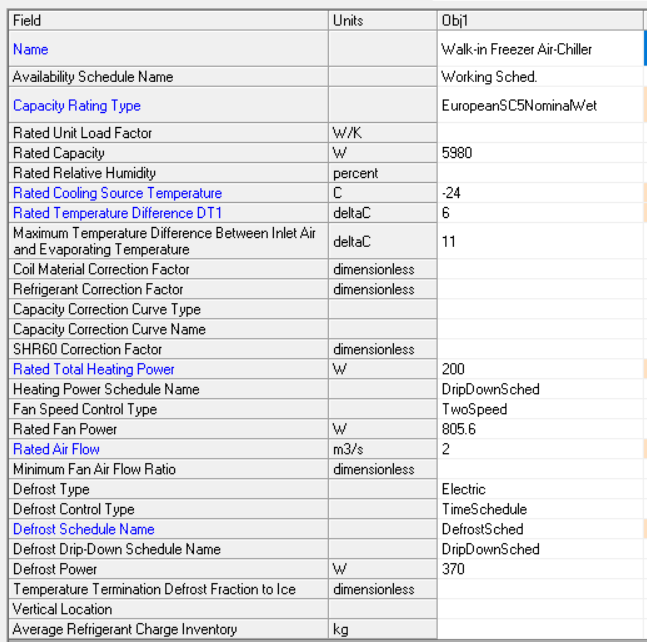
In my analysis, I explored the sensitivity of the internal air temperature to the compressor cooling capacity (CC). I ran the model with varying cooling capacities ranging from 2.16 kW to 6.41 kW, using performance curves obtained from the Bitzer tool.
Surprisingly, the results in Figure 3 indicate that all compressors effectively maintained the air temperature within the cold room between -22 and -18°C, even when the compressor's CC was lower than that of the ArCh. Typically, lower compressor CC leads to a slower temperature drop. Figure 3 also shows that changes in compressor cooling capacity did not significantly impact internal air temperature.
Figure 3 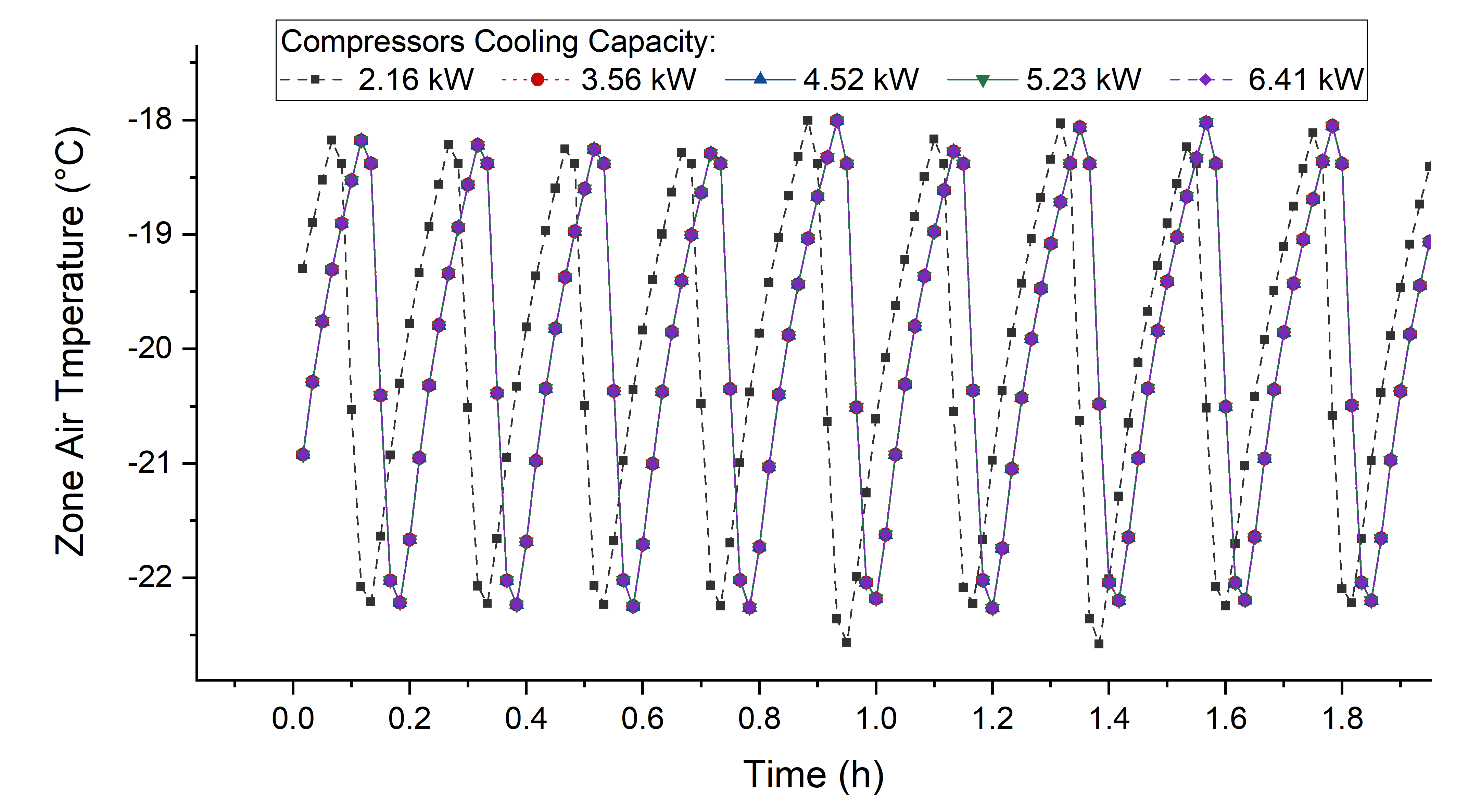
An additional anomaly was observed in Figure 4, where the compressor power consumption (CPC) was higher for the compressor with a higher CC.
Figure 4 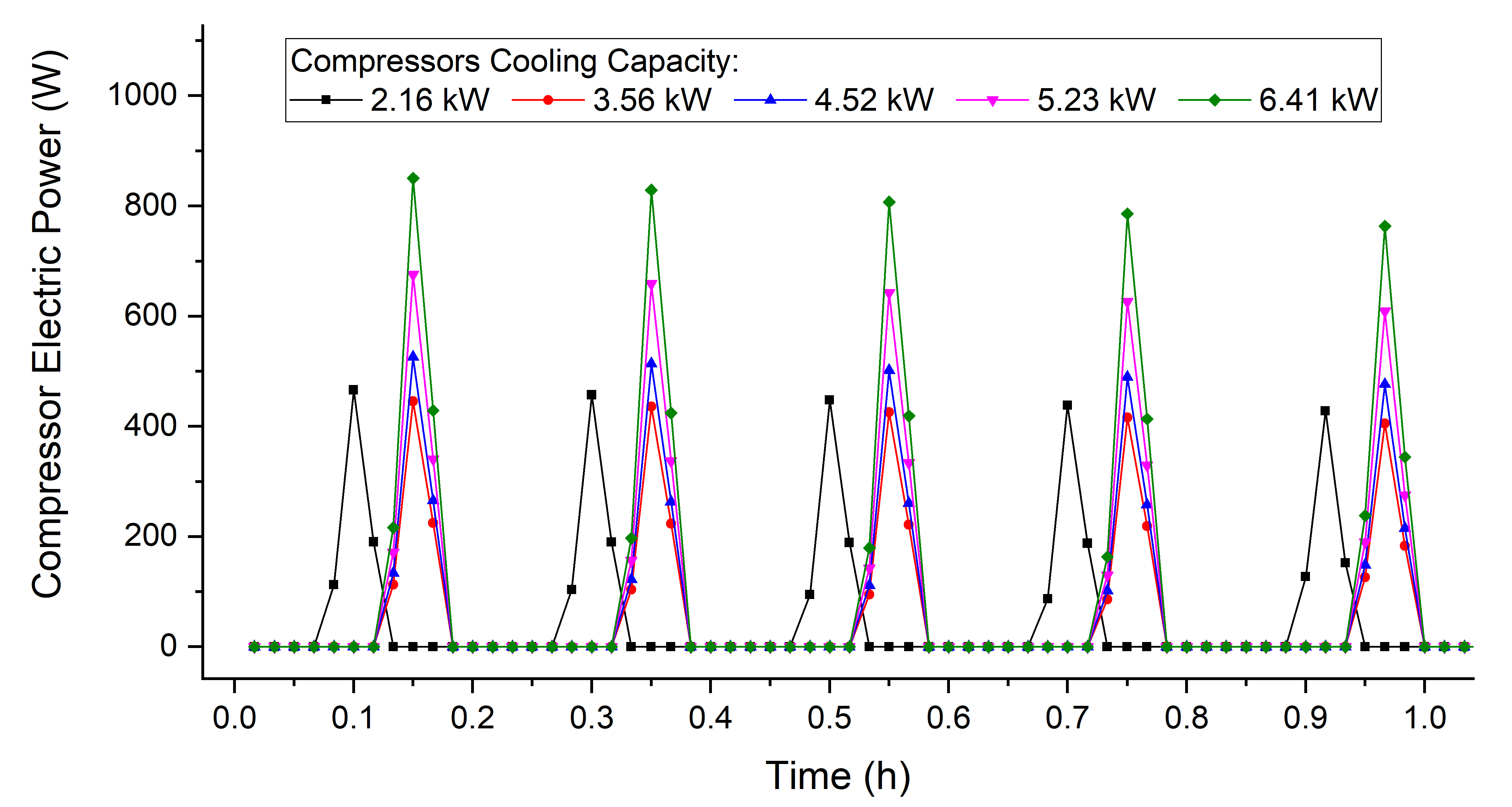
To further investigate, I examined the effect of the ArCh cooling capacity on internal temperature by varying it from 1 kW to 4 kW, focusing on a compressor with a 2.6 kW CC. Figures 5.1 and 5.2 illustrate the internal air temperature at different ArCh cooling capacities.
Figure 5.1 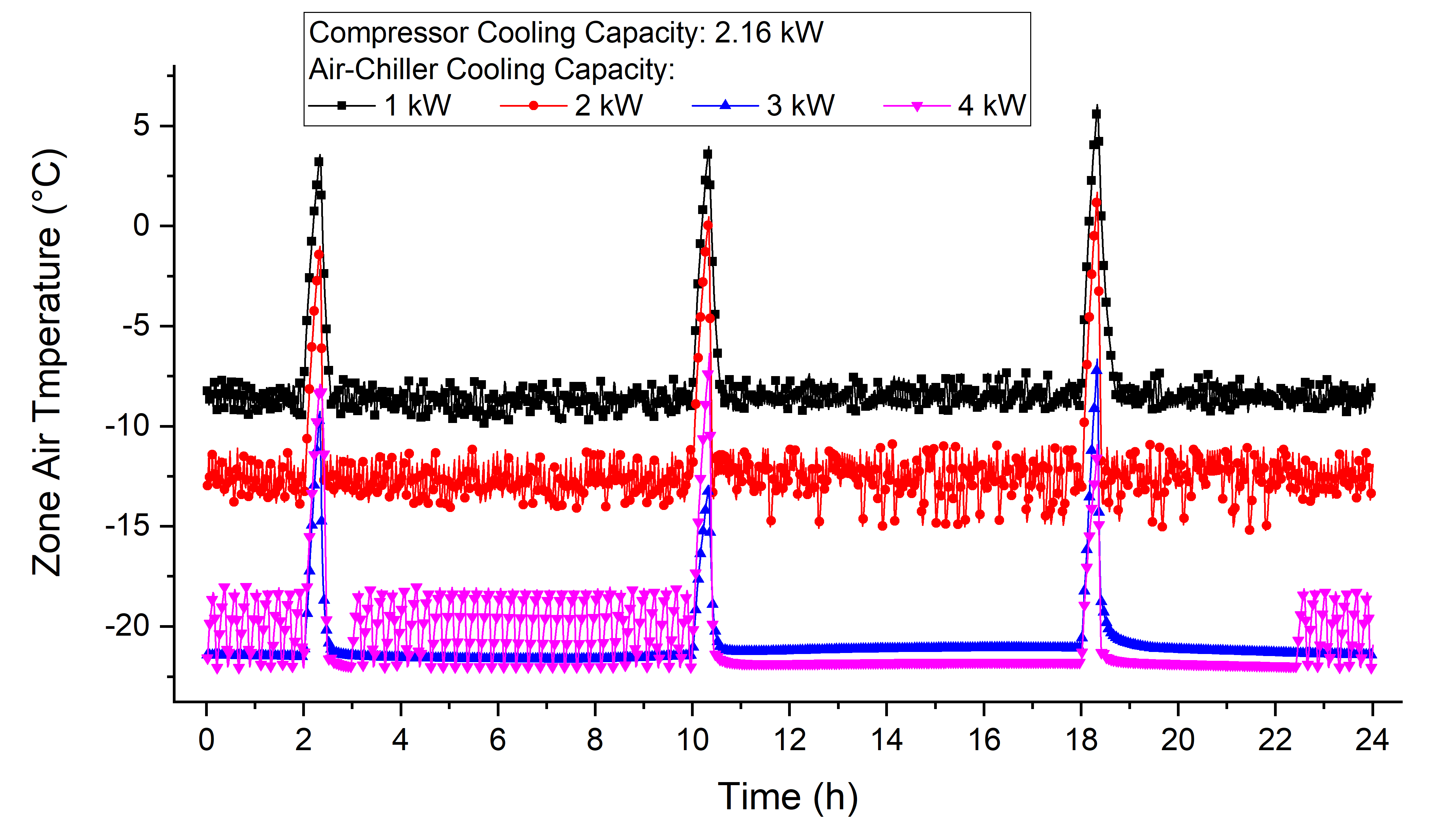
Figure 5.2 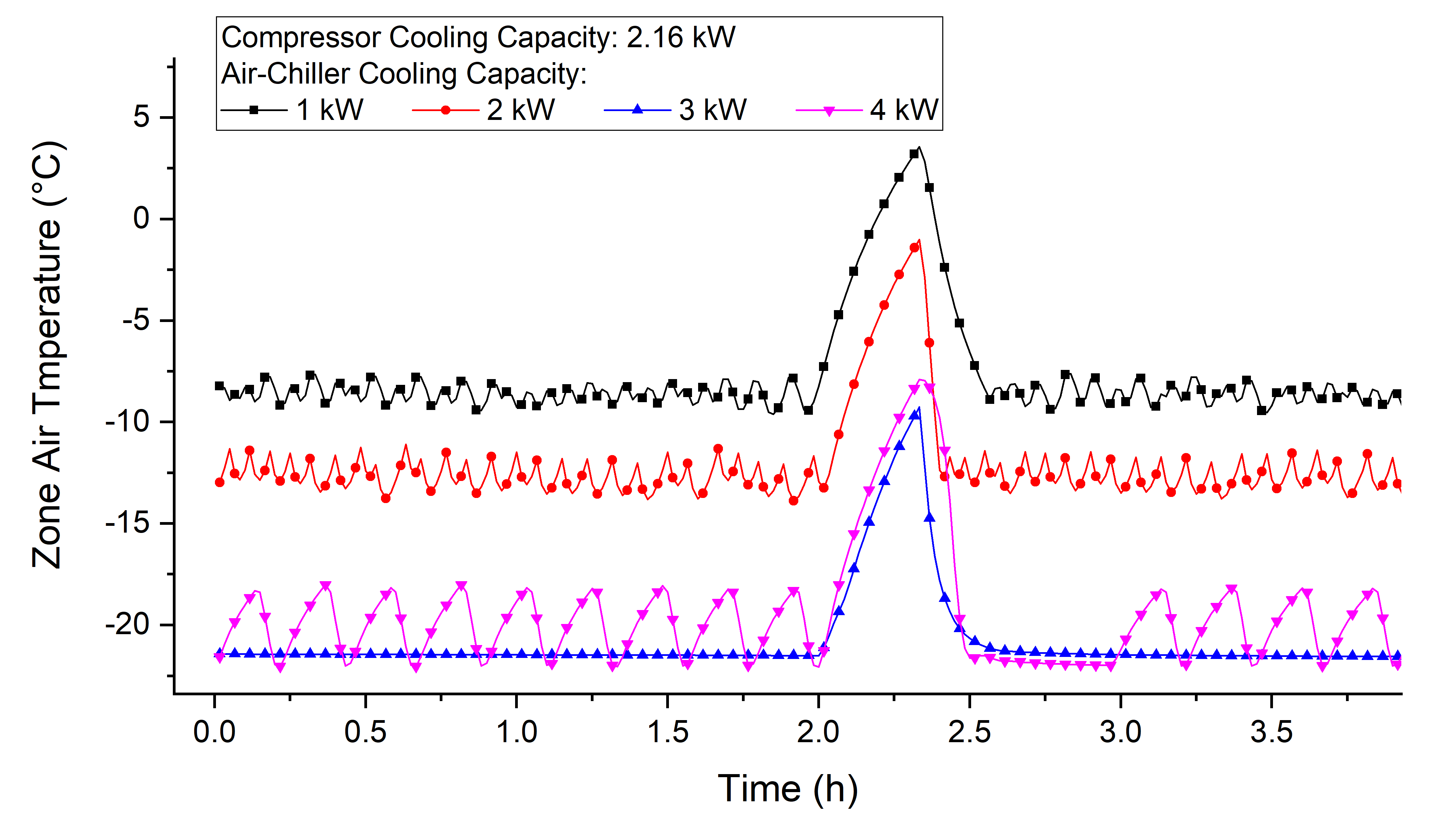
I am seeking insights into why the internal air temperature appears unaffected by changes in compressor cooling capacity but is influenced by the Air-Chiller cooling capacity.
If anyone has an idea, I would appreciate your input. Additionally, I am curious about the normal operation of refrigeration systems in E+, as the observed behavior seems unusual. Could someone explain how the refrigeration system works in EnergyPlus?




